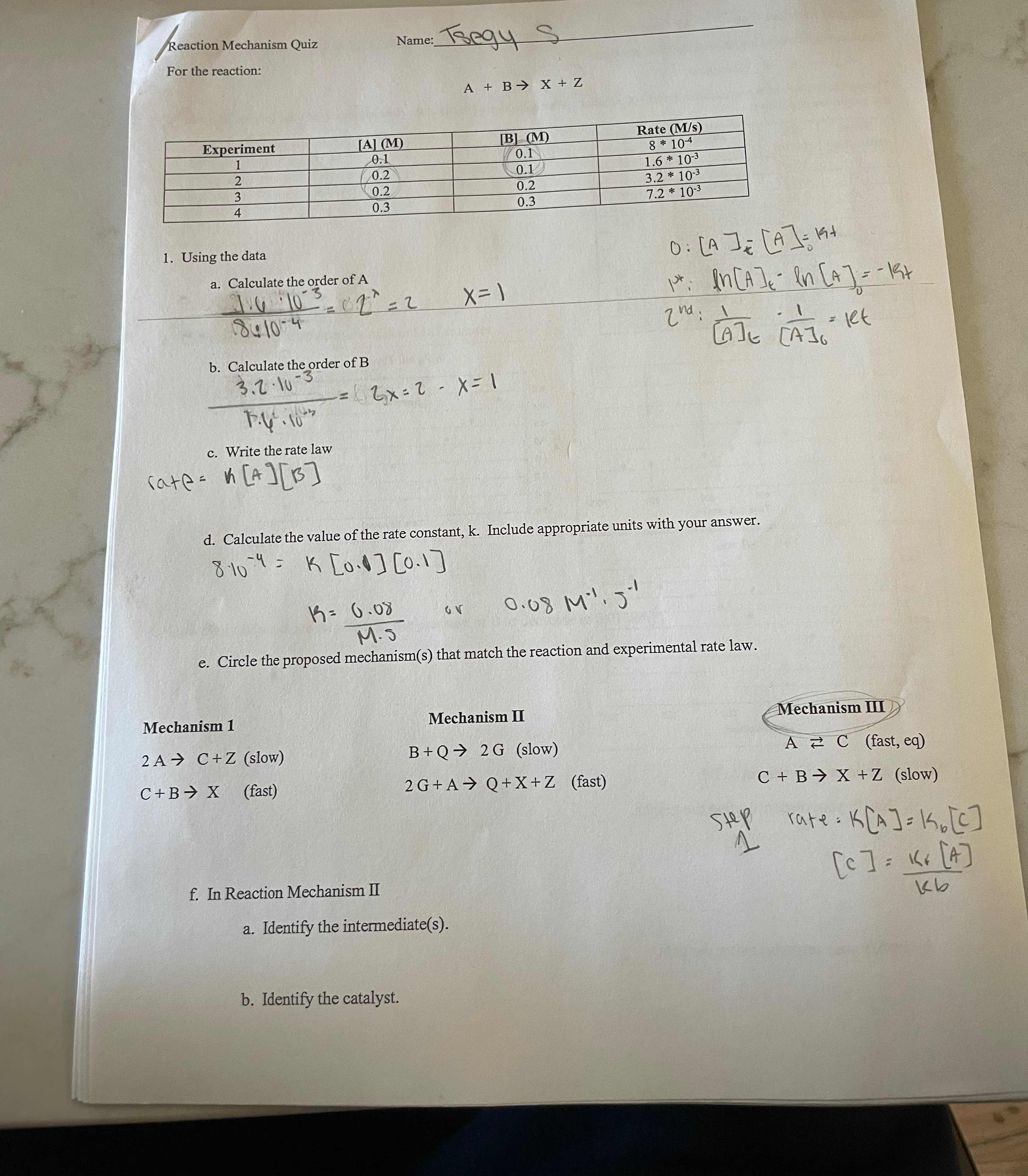For the reaction using the data: A + B -> X + Z. a. Calculate the order of A. b. Calculate the order of B. c. Write the rate law. d. Calculate the value of the rate constant, k... For the reaction using the data: A + B -> X + Z. a. Calculate the order of A. b. Calculate the order of B. c. Write the rate law. d. Calculate the value of the rate constant, k. Include appropriate units with your answer. e. Determine which proposed mechanism(s) that match the reaction and experimental rate law. f. In Reaction Mechanism II: a. Identify the intermediate(s). b. Identify the catalyst.

Understand the Problem
This is a chemistry homework question about reaction mechanisms. We are given experimental data for a reaction A + B -> X + Z and asked to determine the rate law, the rate constant, identify the mechanism that matches the data, and identify the intermediate and catalyst in Reaction Mechanism II.
Answer
a. Order of A is 1, b. Order of B is 1, c. rate=k[A][B], d. k=0.08 M⁻¹s⁻¹, e. Mechanism III, f. In mechanism II, G is the intermediate and Q is the catalyst.
Here are the answers: a. The order of A is 1. b. The order of B is 1. c. The rate law is rate = k[A][B]. d. The value of the rate constant, k, is 0.08 M⁻¹s⁻¹. e. Mechanism III matches the experimental rate law. f. In Reaction Mechanism II: a. The intermediate is G. b. The catalyst is Q.
Answer for screen readers
Here are the answers: a. The order of A is 1. b. The order of B is 1. c. The rate law is rate = k[A][B]. d. The value of the rate constant, k, is 0.08 M⁻¹s⁻¹. e. Mechanism III matches the experimental rate law. f. In Reaction Mechanism II: a. The intermediate is G. b. The catalyst is Q.
More Information
The rate law expresses the relationship between the rate of a reaction and the concentrations of the reactants. The rate constant, k, is a proportionality constant that reflects the speed of the reaction. Reaction mechanisms detail the step-by-step process of how reactants become products, involving intermediates and catalysts.
Tips
A common mistake is to confuse intermediates and catalysts. Intermediates are produced and consumed during the reaction, while catalysts are regenerated.
Sources
- Worked example: Determining a rate law using initial rates data - khanacademy.org
- 3.3.3: Reaction Order - Chemistry LibreTexts - chem.libretexts.org
AI-generated content may contain errors. Please verify critical information